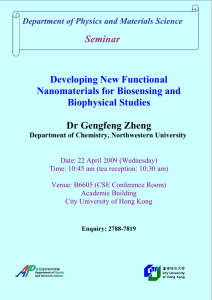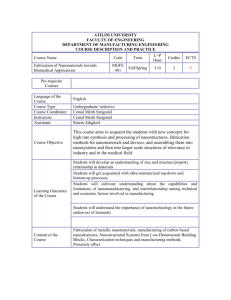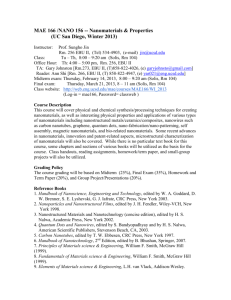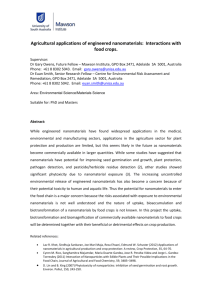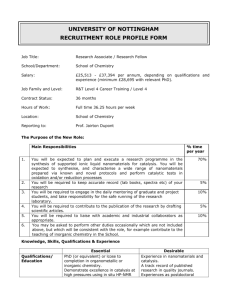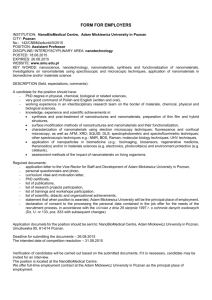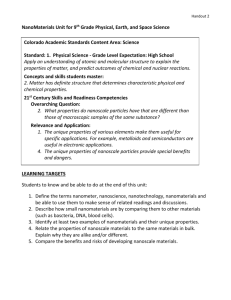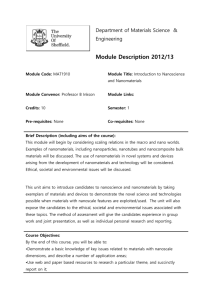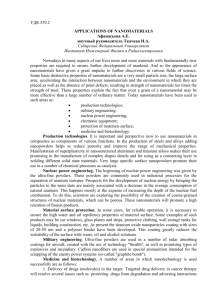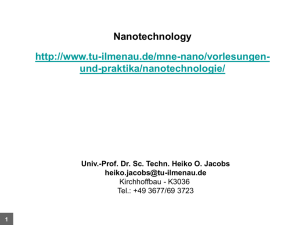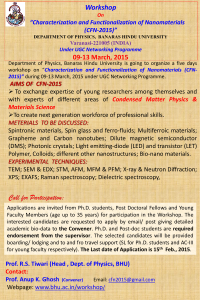Syllabus Course Description Title of a Course Material science of
advertisement
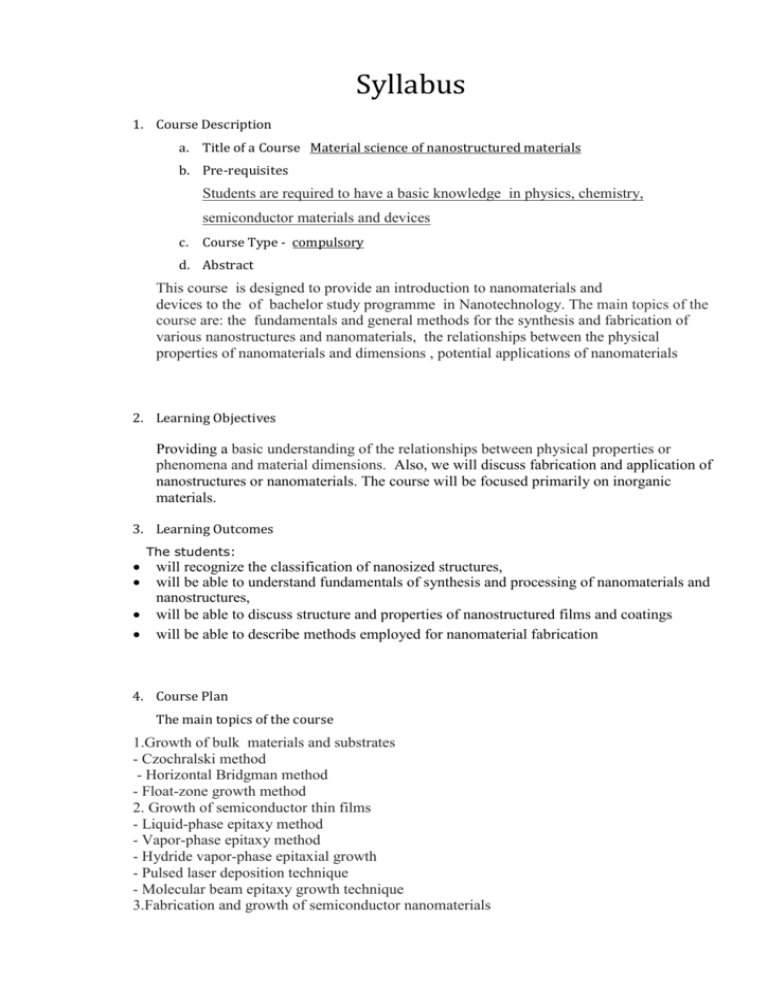
Syllabus 1. Course Description a. Title of a Course Material science of nanostructured materials b. Pre-requisites Students are required to have a basic knowledge in physics, chemistry, semiconductor materials and devices c. Course Type - compulsory d. Abstract This course is designed to provide an introduction to nanomaterials and devices to the of bachelor study programme in Nanotechnology. The main topics of the course are: the fundamentals and general methods for the synthesis and fabrication of various nanostructures and nanomaterials, the relationships between the physical properties of nanomaterials and dimensions , potential applications of nanomaterials 2. Learning Objectives Providing a basic understanding of the relationships between physical properties or phenomena and material dimensions. Also, we will discuss fabrication and application of nanostructures or nanomaterials. The course will be focused primarily on inorganic materials. 3. Learning Outcomes The students: will recognize the classification of nanosized structures, will be able to understand fundamentals of synthesis and processing of nanomaterials and nanostructures, will be able to discuss structure and properties of nanostructured films and coatings will be able to describe methods employed for nanomaterial fabrication 4. Course Plan The main topics of the course 1.Growth of bulk materials and substrates - Czochralski method - Horizontal Bridgman method - Float-zone growth method 2. Growth of semiconductor thin films - Liquid-phase epitaxy method - Vapor-phase epitaxy method - Hydride vapor-phase epitaxial growth - Pulsed laser deposition technique - Molecular beam epitaxy growth technique 3.Fabrication and growth of semiconductor nanomaterials - Nucleation - Fabrications of quantum dots Epitaxial growth of self-assembly quantum dots 4.Colloidal growth of nanocrystals, 5. Fullerenes and carbon nanotubes 6.Characterization of nanomaterial and nanosystems 7.Properties of nanomaterials and nanosystems - mechanical properties - electrtical and transport properties - optical properties - nanostructures under the influence of electric or magnetic fields 8.Principle applications of nanomaterials and nanosystems 5. Reading List a. Required - Pogrebnjak A., Beresnev V. Nanocoatings Nanosystems Nanotechnologies. SAIF Zone, Sharjah, UAE: Bentham Science Publishers, 2012 Guozhong Cao Nanostructures and nanomaterials. Synthesis, Properties, and Applications/ Imperial College Press, 2004 b. Optional J.W Evans and L.C De Jonghe, The Production of Inorganic Materials, Macmillan, New York, 1991. 6. Grading System Course grades are determined on a five-point and ten-point scale Grade: Description: 10 9 8 excellent 7 6 good 5 4 satisfactory 3 2 1 0 unsatisfactory 7. Guidelines for Knowledge Assessment Contribution of mid-term studies to pass mark 40 % Contribution of final exam to pass mark 60 % 8. Methods of Instruction Lectures, tutorials, practical courses and self-study 9. Special Equipment and Software Support (if required) Laboratory for x-ray analysis of materials and structures Matlab software
